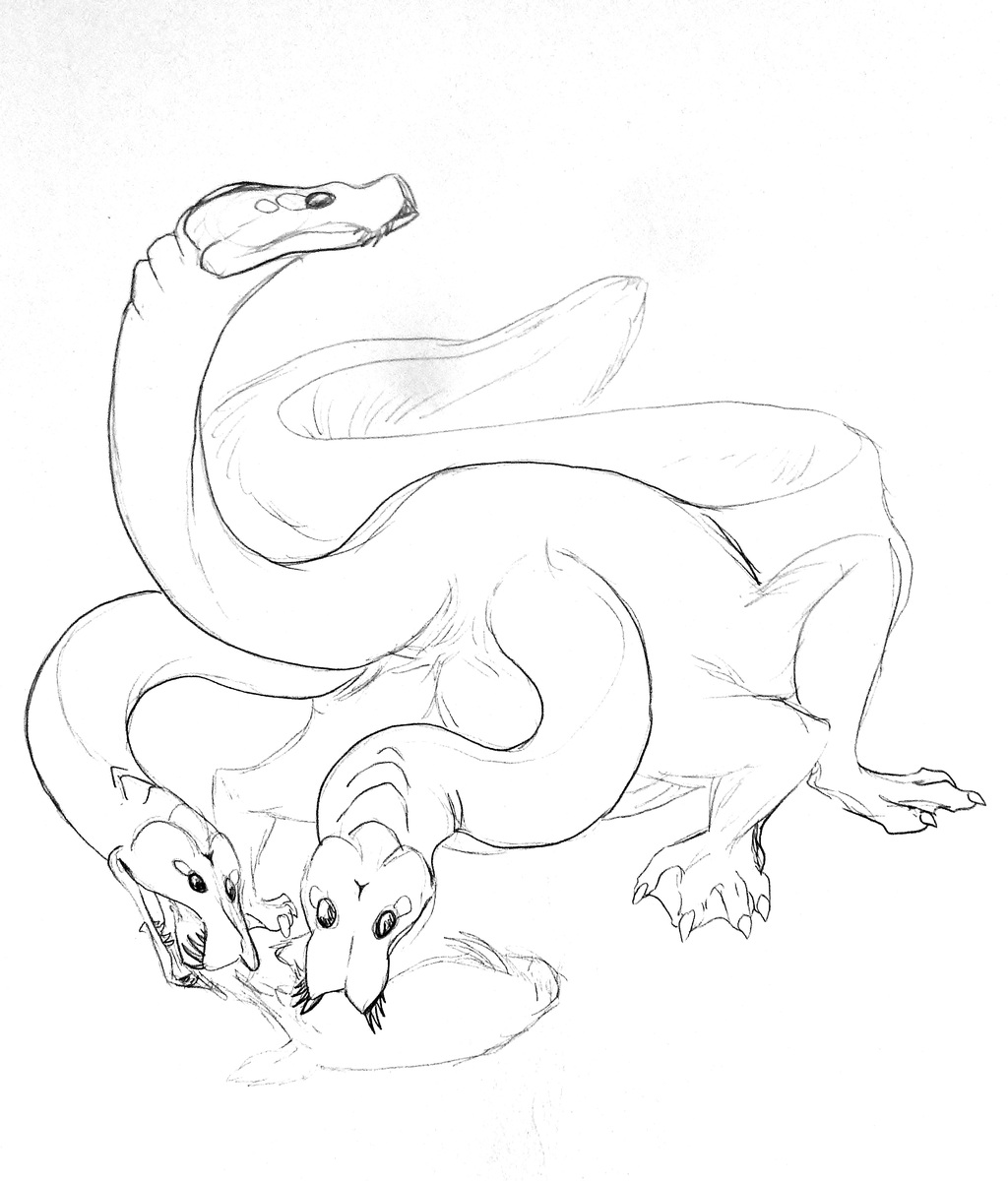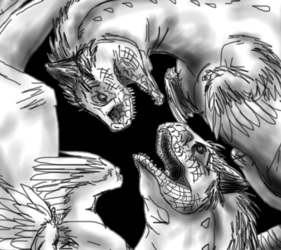Sign In
CloseSpecimen 75--"Bessie"
Species: Estuary Hydra (Hydrasaurus argentum)
Sex: Female (Presumably. No males of this species have been documented.)
Length: 47 feet/ 14.3 meters
Weight: 9 tons/ 8.04 Metric tons
This estuary hydra specimen was captured thirteen years ago when it was about 34 feet in length and probably just barely a juvenile just off the coast of Crete in the Mediterranean. Since capture it has attempted to escape three times, the furthest it has gotten being the entrance to the facility's loading bay for feed and supplies, only recaptured when it collapsed from moderate desiccation. This species is unique among the reported hydra species for its reliance on water despite it being a reptile most closely related to the varanid lizards. The staff have taken to calling her "Bessie" because, when unagitated, the creature is slow-moving and easy-going and almost as tame as a barnyard cow. Unlike a cow, Bessie is purely carnivorous and is fed a large amount of both terrestrial and aquatic lifeforms three times weekly. Bessie appears uninterested in living vertebrates unless they are obviously sick or injured, but she is drawn to the dead animals fed to her and the heads appear to operate in tandem to tear apart prey too large to eat in one chunk. The teeth in the front of the jaw jut outwards and swoop back dramatically for holding carrion and medium-sized fishes in place while the rear teeth seem to be coated in a venomous secretion with paralytic and hematotoxic effects. This venom appears to be very effective on fish tissue and is estimated to be able to render large pelagic fishes (such as blue sharks and sailfish) immobile and brain-dead in less than two minutes. The jaws are also extremely flexible and, while they cannot expand in width to the same degree as snakes, are capable of separating not only the lower mandible but also the upper ones, unique so far to this species of animal. Speculation is that this is not to enable the hydra to swallow large prey whole but to compact the head in order to fit it into smaller spaces, presumably after fish and carcasses entangled in bottom debris. Bessie's eyes cannot detect much else but light and dark--it is unknown if the rest of her species are the same.
Bessie's enclosure is seven acres in land area, with six of these acres completely submerged in water about seven feet in depth to enable easy movement for the hydra. There is a small feeding outcrop above water which Bessie is willing to climb onto but seldom stays for more than twenty minutes at a time. The last acre of Bessie's enclosure opens into a subterranean aquarium thirty feet in depth and also seven acres wide, with viewing ports open at one acre increments.
:D Here's a critter that lives in the same cryptozoo facility as Spider. ^^ Bessie is such a nice aquatic beastie, ain't she?
Here's a thing the researchers don't know about Bessie yet!---> She is indeed female... The reason they've never found males is because a hydra's extra heads... are the males. They function quite a bit like deep-sea anglerfish. :evillaugh: The males are these squiggly wyrm-ish critters with spindly little legs until they attach to a female.
Submission Information
- Views:
- 263
- Comments:
- 0
- Favorites:
- 0
- Rating:
- General
- Category:
- Visual / Sketch




